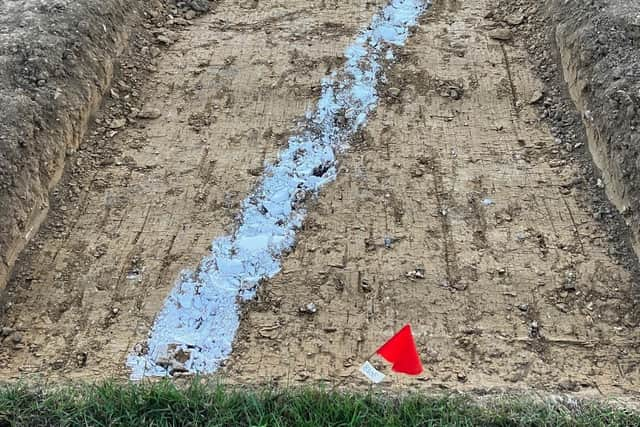How Tangmere went from Saxon Settlement to RAF airfield as new Roman find adds layers to village history
and live on Freeview channel 276
Although the recent discovery might change historical consensus, it seems Tangmere was originally A Saxon settlement, with the earliest records dating back to 680in the form of a charter issued by King Caedwalla granting some 120 acres of land in what is now Tangmere to the church.
A note in the Domesday book of 1086 reports that Tangmere had a population of around 120 people, with the stone church of St Andrew – which still stands today – built just after the Norman Conquest in 1066. Originally made out of timber, the church was renovated with stone in 1100. The church would be added to in the 12th century and again in the 19th century. It’s hard to pinpoint the exact date of the church’s construction, but the presence of a yew tree on the site suggests it had spiritual significance long before the Saxons were Christianised.
Advertisement
Hide AdAdvertisement
Hide AdBy 1341, Tangmere was growing and King Edward II granted the new Archbishop of Canterbury the right to hold a fair at Tangmere on St Andrews day, which continues to take place in the village every autumn.


The village manor was owned by the Archbishop of Canterbury until 1542, when Henry VIII claimed it for the crown. Ownership of the land passed back and forth between the crown, the church and associated noble families for sometime, until it became part of the Halnaker estate in 1579, which was eventually acquired by the Third Duke of Richmond. The land was owned by the Richmonds until the 1930s.
Tangmere also had a pivotal role to play during the Second World War, due to the use of a nearby field to base RAF pilots and planes. The air base itself dates back to 1917 for use by the Royal Flying Corps for use as a training aerodrome. Turned over to the American Air Force and closed temporarily after the end of the war, the station re-opened to serve the Fleet Air Arm.
When the war started in 1939, the airfield was expanded to defend the coast from attack by the German Luftwaffe. Several homes and the village’s only hotel were demolished, and the majority of the homes in the centre of the village were commandeered by the military, with only a handful of families allowed to stay.
Advertisement
Hide AdAdvertisement
Hide AdBy 1940, the first squad of Supermarine Spitfires were based on the satellite airfield at nearby Westhampnett. They’d come in handy, too. That year, 100 German Stukas caused serious damage to British aircraft during a raid, killing 14 service people and six civilians and, come Summer, RAF Tangmere would play a pivotal role in the Battle of Britain, protecting the south coast from scores of enemy fighter planes.
Tangmere was also a secret base for the Special Operations Executive, which flew agents in and out of occupied France to reinforce the resistance, and served as home to Douglas Bader, the legendary legless fighter pilot who led the Tangmere wing of Fighter Command as the war went on.
So, Tangmere’s history is already deep, vibrant and exciting but, with the recent discovery of the Roman settlement, what we know of it could be set to become even more so.